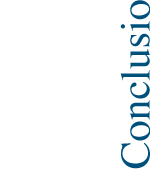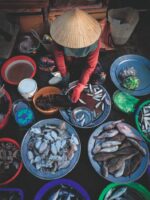- Food from the sea
- > For a long time, the ocean was seen as an inexhaustible storehouse of food. But the days of plentiful supply are long past. Through overfishing, coastal development and climate change, humankind has already deprived many marine species of their vital necessities. New strategies for sustainable fisheries and aquaculture management chart a course towards improvement but are rarely implemented in actual practice.

A food source at its limit
The world cannot be fed without fish – all experts agree on that. More than 3.3 billion people get at least one fifth of their animal protein from aquatic foods. The importance of marine fish is even greater for coastal populations in developing nations and for the inhabitants of small island states. For many of them, fish is often the only affordable source of ani- mal protein. Most other people are also consuming more and more fish and seafood. Since 1995, global per capita fish consumption has increased from 13.4 kilograms to 20.5 kilograms per year.
This increase has been made possible by more intensive fishing, especially in lakes, and an expan- sion of domestic and marine aquaculture. Never- theless, marine capture fisheries still account for the largest proportion of wild catches, as international catch figures have remained at a very high level for about 15 years. It is difficult to quantify the damage caused by this intensive marine fishing because half of the fish caught come from stocks that are not sub- ject to any kind of scientific monitoring. According to FAO (Food and Agriculture Organization of the United Nations) data, more than one third of the scientifically assessed stocks are now considered overfished. Other studies assume an even higher figure, as the FAO statistics do not, for example, take sufficient account of illegal, unreported and uncon- trolled fishing.
New technologies such as satellite monitoring, automatic vessel identification systems and data por- tals on fishing and reefer vessels now allow inspec- tors to detect illegal fishing activities to a greater extent. Greatly encouraging is also the fact that in areas where stocks have been managed in a sustain- able and science-based manner and fishing activities have been closely monitored, once overfished fish populations have been able to recover. In contrast, the situation is dire wherever there are no controls or where fisheries management is far removed from scientific advice; this is true even in some parts of the European Union.
Neither scientists nor politicians agree among themselves as to the role marine aquaculture can play in feeding the growing global population in the future. Some experts point to the theoretical possibi- lity of enormous increases in production; others are much less optimistic in their outlook.
In the past, the construction and operation of aquaculture facilities have resulted in large-scale environmental degradation. Science and industry are therefore devoting a great deal of effort to the devel- opment of more sustainable production standards, technologies and facility designs. Their implementa- tion or utilization should conserve natural resources, minimise the use of medication and chemicals, and reduce the overall impact on the ocean. To date, the integrated or ecosystem-based approaches with closed nutrient cycles offer the best prospects in this regard.
Great hopes rest on the cultivation of macro- algae, the fastest expanding aquaculture sector. Intensive research is also being conducted on substi- tutes that will allow for the reduction of the propor- tion of fishmeal and fish oil in feeds.
However, in order for sustainable business stra- tegies to prevail in the long term, stricter regulations and controls are needed in the aquaculture sector. Quality labels such as the ASC logo can be suppor- tive in this respect.
But there are also ever louder calls for the con- sumption of fish and seafood to be reduced, given that as a result of the increasing consumption of fish worldwide, the sea as a food source has long since reached its limits.

